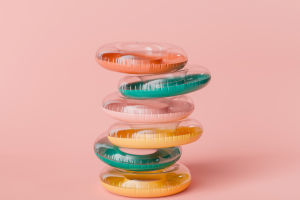The pencil grip is a fundamental aspect of writing and drawing that significantly impacts both comfort and precision.
While it may seem like a minor detail, the way one holds a pencil can influence handwriting quality, reduce hand fatigue, and enhance overall control.
Understanding the correct pencil grip involves not only the physical aspects of holding a pencil but also the benefits it brings to various tasks.
There are several common pencil grips, each with its own advantages and suitability for different tasks. The three most recognized grips are the tripod grip, the quadrupod grip, and the pencil-over-finger grip.
Understanding these grips helps in choosing the most effective one for individual needs.
1. Tripod Grip
The tripod grip is the most widely recommended and used grip. It involves holding the pencil with the thumb, index finger, and middle finger.
The thumb and index finger form a "pinch" around the pencil, while the middle finger supports it from underneath. This grip allows for precise control and is typically used by both children learning to write and adults performing detailed tasks.
Technique:
Position: Hold the pencil near its tip, about one to two inches from the writing end.
Fingers: Use the thumb and index finger to grip the pencil, with the middle finger resting underneath for support.
Angle: Maintain a 45-degree angle between the pencil and the paper for optimal control.
2. Quadrupod Grip
The quadrupod grip is similar to the tripod grip but involves an additional finger. In this grip, the pencil is held between the thumb, index finger, and middle finger, with the ring finger also providing additional support. This grip can offer extra stability and control but may feel less natural for some users.
Technique:
Position: Hold the pencil with the thumb, index, and middle fingers, with the ring finger resting lightly on the paper.
Fingers: Ensure that the ring finger is relaxed and does not add unnecessary pressure.
Angle: Keep the same 45-degree angle as with the tripod grip.
3. Pencil-Over-Finger Grip
The pencil-over-finger grip involves holding the pencil with the index finger placed over the top of the pencil, while the thumb and middle finger provide support from the sides. This grip is less common but can be useful for certain writing styles or individuals with specific hand structures.
Technique:
Position: Hold the pencil with the index finger on top, while the thumb and middle finger grip from the sides.
Fingers: The index finger should be relaxed and positioned comfortably over the pencil.
Angle: Maintain a slightly steeper angle to accommodate the over-finger position.
Adopting the correct pencil grip is not merely about adhering to a standard; it has tangible benefits that enhance the quality of writing and drawing.
1. Improved Handwriting
A proper grip ensures better control over the pencil, leading to neater and more legible handwriting. The tripod grip, in particular, allows for smooth and consistent strokes, which is crucial for clear and precise writing.
2. Reduced Hand Fatigue
An ergonomic grip reduces unnecessary strain on the hand muscles, decreasing the likelihood of fatigue during prolonged writing or drawing sessions. The correct grip helps distribute pressure evenly across the fingers, minimizing stress on any single area.
3. Enhanced Precision
For artists and draftsmen, the ability to control the pencil with precision is essential for detailed work. The tripod grip, with its balanced support and fine control, allows for intricate and accurate lines, essential for high-quality drawings.
4. Encouragement of Proper Posture
The correct pencil grip often encourages proper writing posture. When the grip is natural and comfortable, it supports a straight and relaxed posture, reducing the risk of developing bad habits that could lead to discomfort or health issues.


